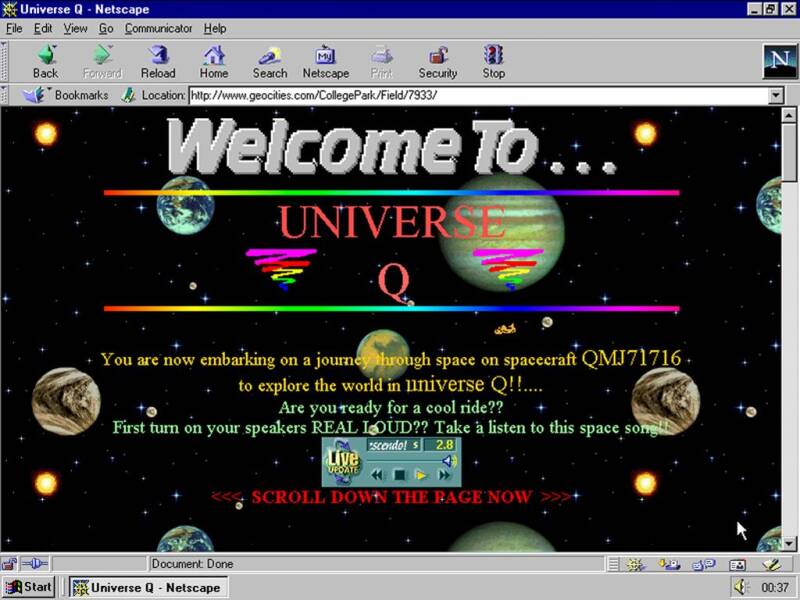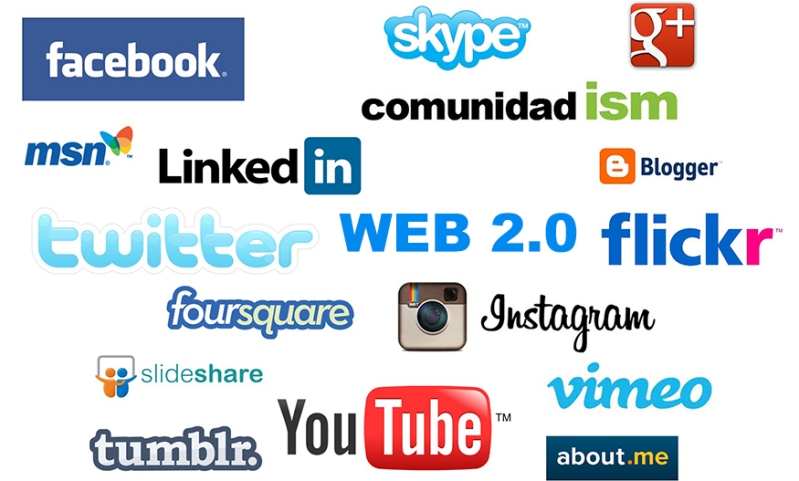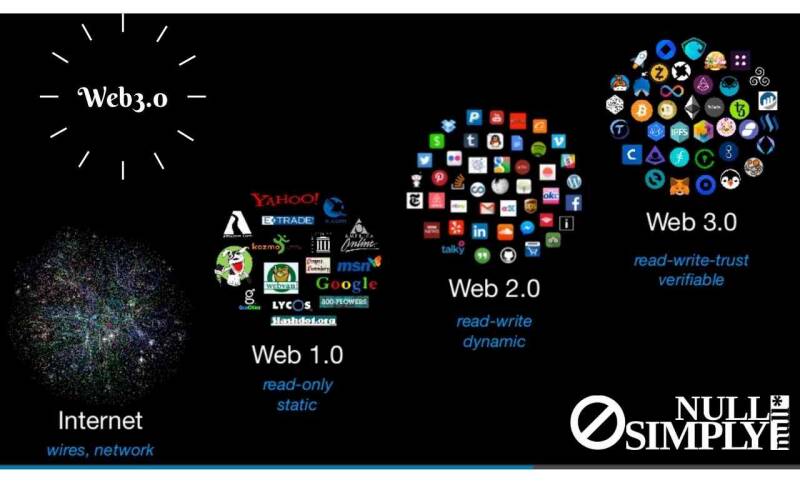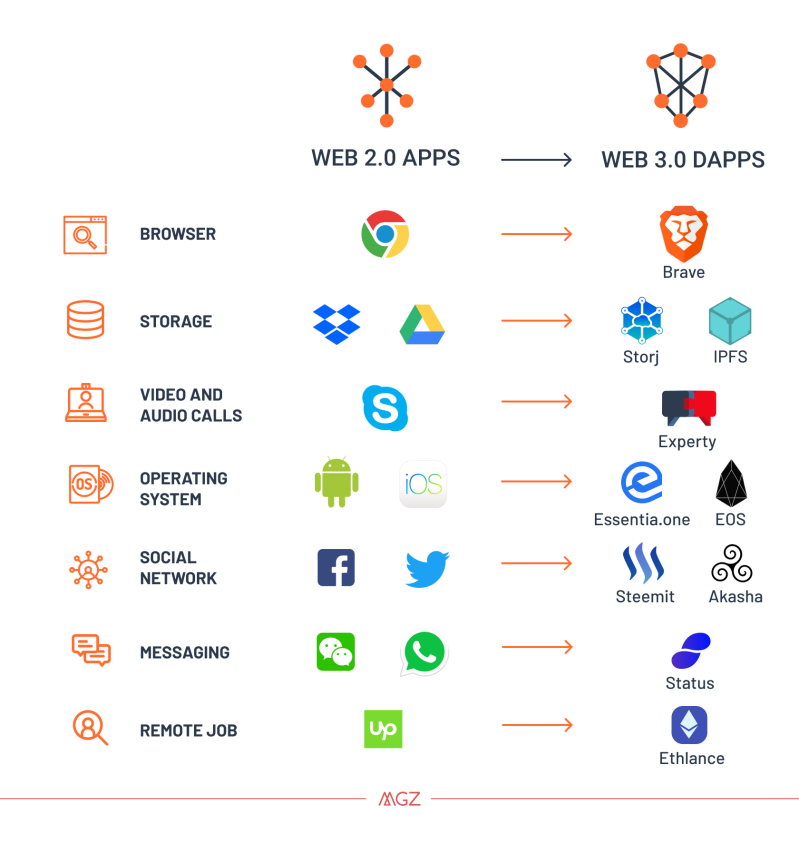
The Internet has gone through many developments from the beginning. So the internet is not a static thing. Where in the past only some simple text could be read, we can now do much more with the Internet. The internet has also become more interactive. This has been strengthened by the rise of social media. There is also a lot of talk about Web 3.0, a transition from Web 2.0.
What is web 1.0 and 2.0?
Web 1.0 was the very first form of the Internet. Web 1.0 came live around 1993 when the Internet was opened up to everyone. Anyone could access the Internet at that time. Web 1.0 ended in 1998, when Web 2.0 came live.
Web 1.0 consisted of nothing more than simple websites. You could browse to a website that only had some bits of text and an image on it. You couldn't do anything else on that website other than read a lot of text and watch pictures. So it was not interactive at all, but there was a lot of information available.
The Internet at Web 1.0 was not yet a big deal. But Web 1.0 was a new way of getting information. The foundation for further development in Web 2.0 and Web 3.0 was laid in Web 1.0.
In 1998, Web 1.0 switched to Web 2.0. During Web 2.0, the Internet was increasingly used as a communication tool. The users who went on the internet could now actually contribute to the web. The internet became more and more interactive.
Web 2.0 gave rise to blogs, encyclopaedia-like websites such as Wikipedia and Google, social media like Facebook and Hyves, video sites like YouTube, etc. Web 2.0 is the internet as we know it today. We can now do anything on the internet. From watching videos to making video calls to someone on the other side of the world. Web 2.0 made all this possible. Web 2.0 also made it possible to do something on the internet yourself. For example, starting your own blog or website, or your own YouTube account. So you can actually create user interaction.
It seems like the Internet under Web 2.0 is completely free. But that is not entirely the case. Big players like Google, Facebook, Amazon and Microsoft have a lot of power and determine through their algorithm what happens on their platform and what information you get to see.
What is Web 3.0?
All this is about to change in Web 3.0. In Web 3.0, users are in charge of the Internet. So not a few large parties like Google and Facebook are the ones who have power over the web. This is because open source internet is used. That will be an important part of Web 3.0. Because the internet is open source, anyone can add something to it. The power is no longer in the hands of a few large parties with a commercial interest.
In addition, in Web 3.0, data will no longer be stored centrally, as is the case with Google or Facebook. The information or data is connected through decentralization (a core element of blockchain and crypto). The fact that data is 'stored' in a decentralized way is in my opinion the biggest change compared to web 2.0. There is also no need to use large servers (you only need nodes / a lot of computers).
Because blockchain fits perfectly into Web 3.0 due to decentralization, security (digital signature), immutability and transparency, blockchain and crypto will play a major role in the development of web 3.0.
Smart contracts could also fit perfectly into Web 3.0. Smart contracts ensure that certain tasks can take place automatically but must be done safely. Smart contracts and blockchain can play an important role in this. As a result, there is no longer a need for an intermediary such as Google or Facebook. The large tech companies that we know today would no longer be able to exist because of Web 3.0. In fact, everything works in a decentralized way.
Examples of Web 3.0
You can easily compare Web 3.0 with decentralized apps (Dapps). These are proprietary apps built on blockchain (by means of smart contracts, among other things). As the term suggests, these apps are built in a decentralized way and the underlying code can be viewed by anyone. With apps that exist today, such as Microsoft Word and Excel, you cannot see exactly how they work and you cannot improve the app as an outsider. You cannot work on the code that underlies these apps. This is possible with Dapps because it is open source. The code is public and anyone can access it. Anyone can copy and reuse that code.
Decentralized Exchanges are a good example of Dapps. With a decentralized exchange, not one entity or group of entities is in charge of the exchange. There is no central entity as is the case with central exchanges. The liquidity of the exchange is not provided by a central entity, but by all users. The concept of a liquidity pool is important here. Users can delegate their crypto into a liquidity pool where other users can buy crypto through a trading pair.
Another good example is Everipedia. I think you can guess what Everipedia is. It looks like Wikipedia. Everipedia contains all the information and news related to blockchain. Anyone can add articles to Everipedia and it's completely decentralized without a central entity. Nobody can say what is or isn't allowed on Everipedia. No one has any absolute power on the platform.
Pros and cons of Web 3.0
Pros
- The first advantage of Web 3.0 is that all information is not stored centrally, but decentrally. There is no longer a need for a central authority that determines everything by means of an algorithm. You can see it as a large web where all data is stored decentrally at the level of the nodes.
- Surfing the Internet will be more efficient because you decide what you see. There is no algorithm that decides what you see. And that algorithm is built by a central authority like Facebook or Google. You will also be less likely to be pulled into tunnel vision when watching certain videos or searching for certain topics. This is also the strongest advantage of Web 3.0. The big players no longer have any influence on what you see. But again, this depends on each individual. Some people like the fact that Google and Facebook determine what you see based on your search history or preferences.
Cons
-
Web 3.0 is not an easy technology to understand, especially when blockchain, crypto, smart contracts etc. will be part of it. Especially for beginners in the crypto and blockchain space, this may could be a threshold to get involved with web 3.0. People who already have some experience with blockchain, crypto etc. will probably be able to use Web 3.0 faster than someone who does not. They need guidance in the beginning. For example, if Dapps explain step by step how it works, I do not foresee any problems. When the internet first came out, it was something new that not everyone understood very well. More than 20 years later, everyone knows Google and we all use the internet. Adaptation occurs with every technological development.
-
One characteristic of blockchain is that there is transparency. This also means that certain information is public. For example, you can find certain information about your neighbor or companies. This can be undesirable.
-
A disadvantage may be that there is no central authority to monitor what is happening. Much can be said about Facebook in the area of privacy and freedom of speech, for example. But Facebook does make sure that their platform is safe. Facebook can remove posts if they are in conflict with its own policy (such as child pornography, violence, etc.). Because Web 3.0 is decentralized, a central authority will also disappear. You could fall for scammers or other rogue parties more easily. They will have free rein.






Reactie plaatsen
Reacties